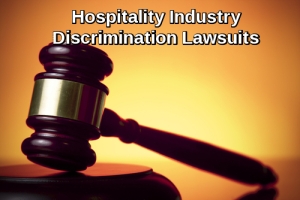“…The enforcement guidance issued by the EEOC interprets broadly which employees should be considered “supervisors†under Title VII.  According to the guidance, any individual with the ability to exercise significant direction over another’s daily work is a supervisor, and the employer would be liable for their acts…The U.S. Supreme Court rejected the EEOC’s stance with the 2013 case of Vance v. Ball State University. If the employer is unaware of a co-worker’s harassment, the Supreme Court decided that employers should only be vicariously liable under Title VII for a co-employee’s harassing behavior if the employer granted them the power to take “tangible employment actions,†such as hiring, firing, failing to promote, significant reassignment, or decisions causing significant changes in the employee’s benefits…”
According to the guidance, any individual with the ability to exercise significant direction over another’s daily work is a supervisor, and the employer would be liable for their acts…The U.S. Supreme Court rejected the EEOC’s stance with the 2013 case of Vance v. Ball State University. If the employer is unaware of a co-worker’s harassment, the Supreme Court decided that employers should only be vicariously liable under Title VII for a co-employee’s harassing behavior if the employer granted them the power to take “tangible employment actions,†such as hiring, firing, failing to promote, significant reassignment, or decisions causing significant changes in the employee’s benefits…”
Employers are not automatically liable for harassment committed by all employees. If the employer is aware of harassment occurring and does not take steps to address and stop it, then the employer has some exposure. If the employer is not aware of the harassment, the employer may be liable if the harasser is considered under the law to be a “supervisor.â€
Some harassment lawsuits turn on whether the person who was doing the harassing should be treated as a supervisor. A recent Tenth Circuit Court of Appeals decision (which applies to Oklahoma employers), sets some guidelines for what employees are considered supervisors, for purposes of imposing potential harassment liability on employers.
Priess Enterprises operated a McDonald’s restaurant in Cheyenne, Wyoming. Megan McCafferty began working as a crew member on February 15, 2007. Her shift leader was Jacob Peterson. Peterson participated in the restaurant’s “Manager-in-Training†program. He was also responsible for directing day-to-day activities of shift workers like McCafferty. His responsibilities included assigning duties, scheduling breaks, authorizing crew members to leave early or stay late, and writing up employees for misconduct. Everyone agreed that Peterson did not have the authority to hire, fire, promote, demote or transfer other employees.
McCafferty, a high school student, agreed to cover another employee’s shift, but explained to Peterson she would need a ride from school. As promised, Peterson picked up McCafferty from school and checked her out of class early. Peterson told McCafferty that she had been excused from her shift, and asked her if she wanted to “hang out.â€
When she accepted his invitation, Peterson offered McCafferty marijuana. Peterson and McCafferty spent the next two days together, which involved alcohol, methamphetamines and sex. Eventually, McCafferty’s sister spotted her, pulled McCafferty from Peterson’s car, and called the police. When McCafferty did not contact anyone at McDonald’s, the restaurant treated McCafferty as having resigned.
McCafferty filed a charge of discrimination with the Equal Employment Opportunity Commission, and later filed a lawsuit against the restaurant and Peterson. McCafferty claimed Peterson was a supervisor under Title VII, and that she had been sexually harassed. McCafferty also included a state law claim, accusing the restaurant of being negligent in hiring, supervising and retaining Peterson.








